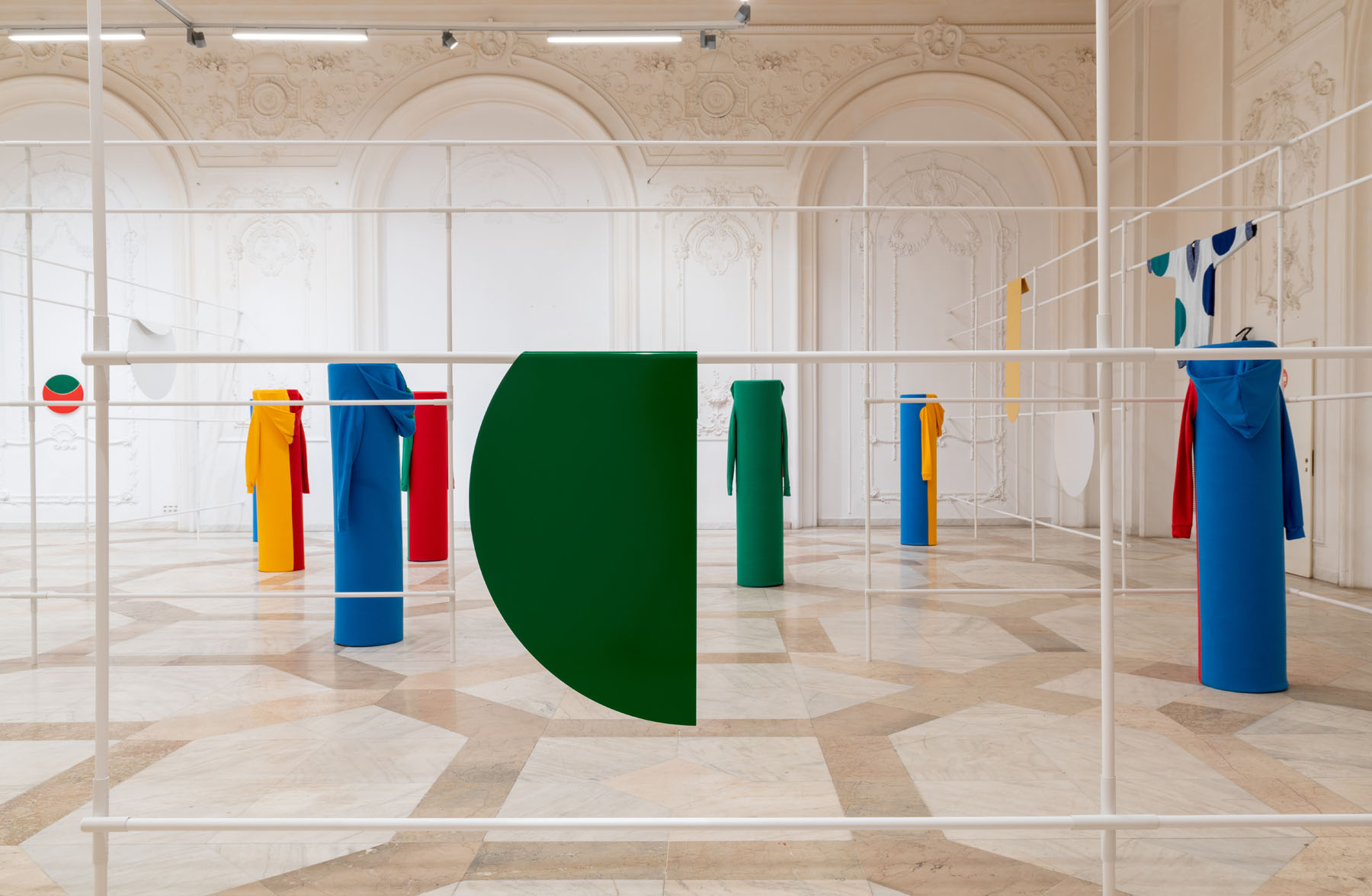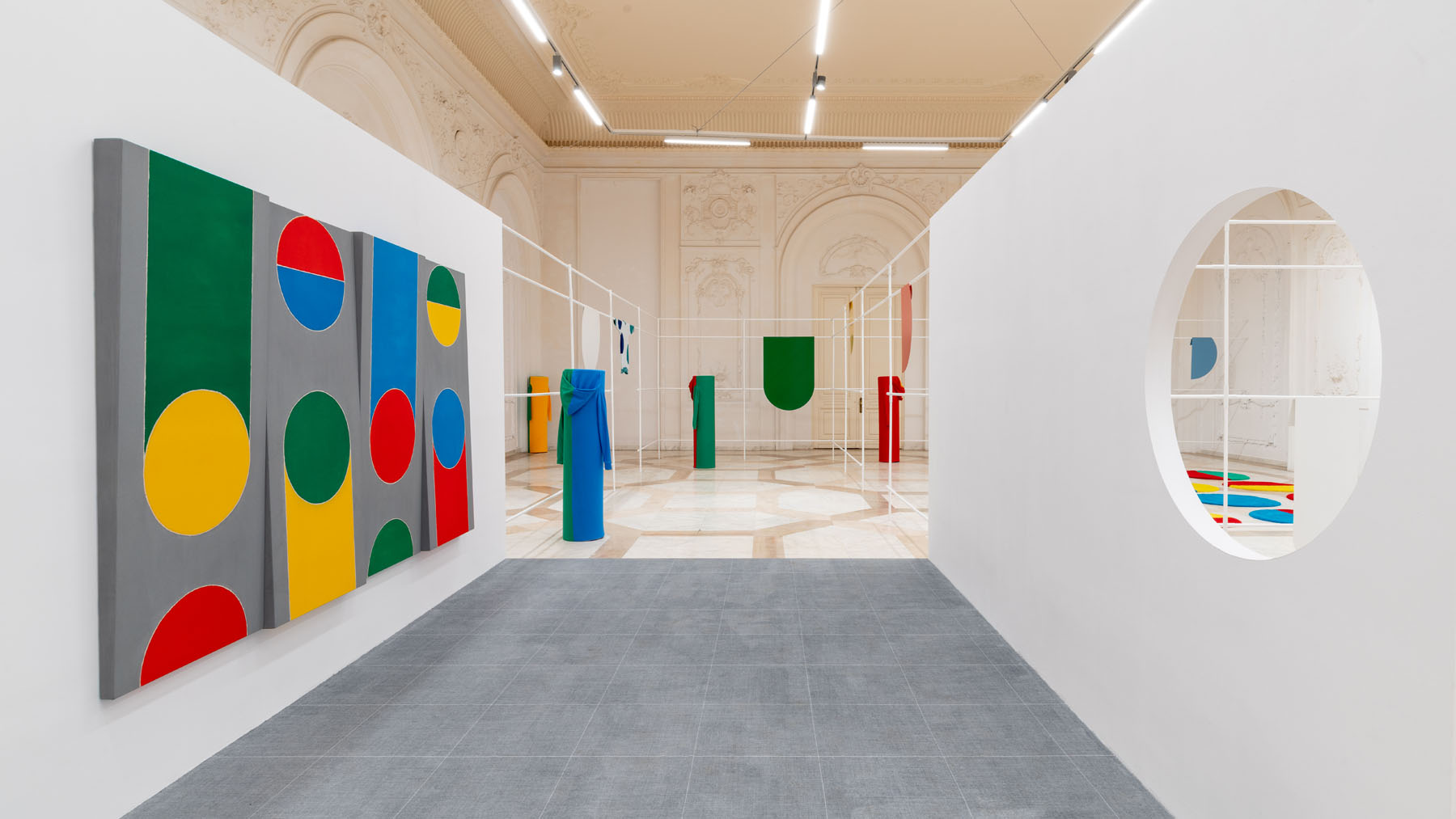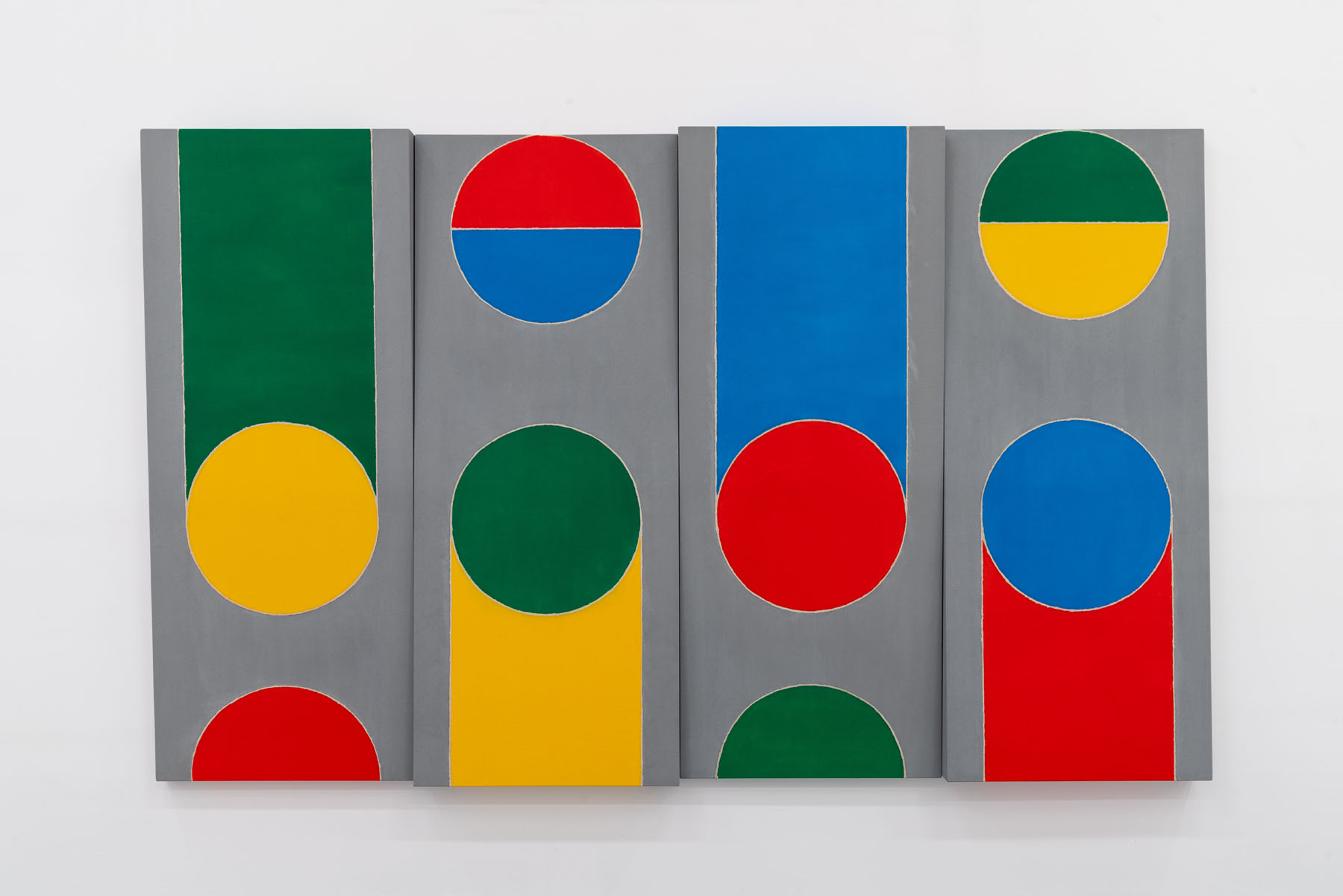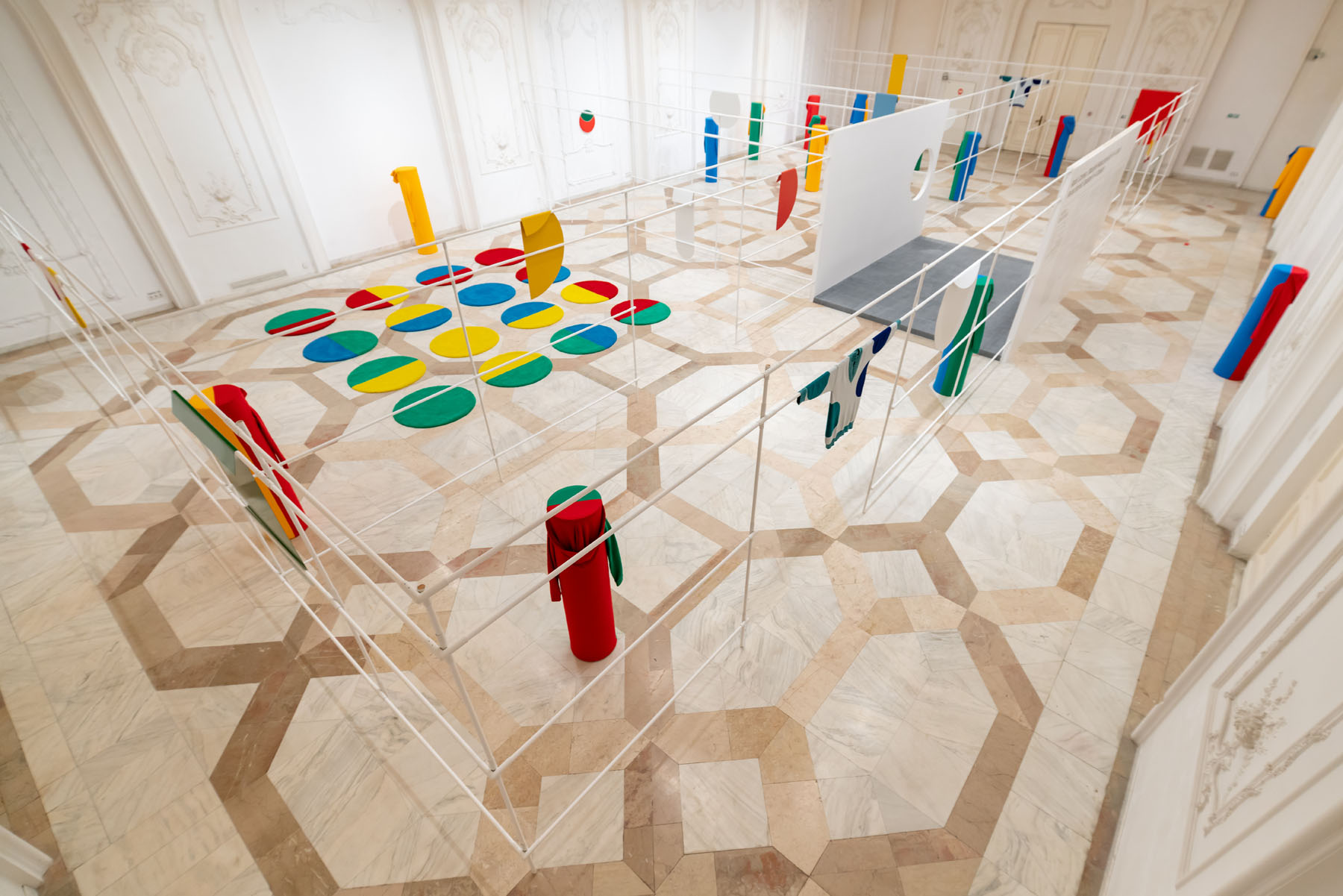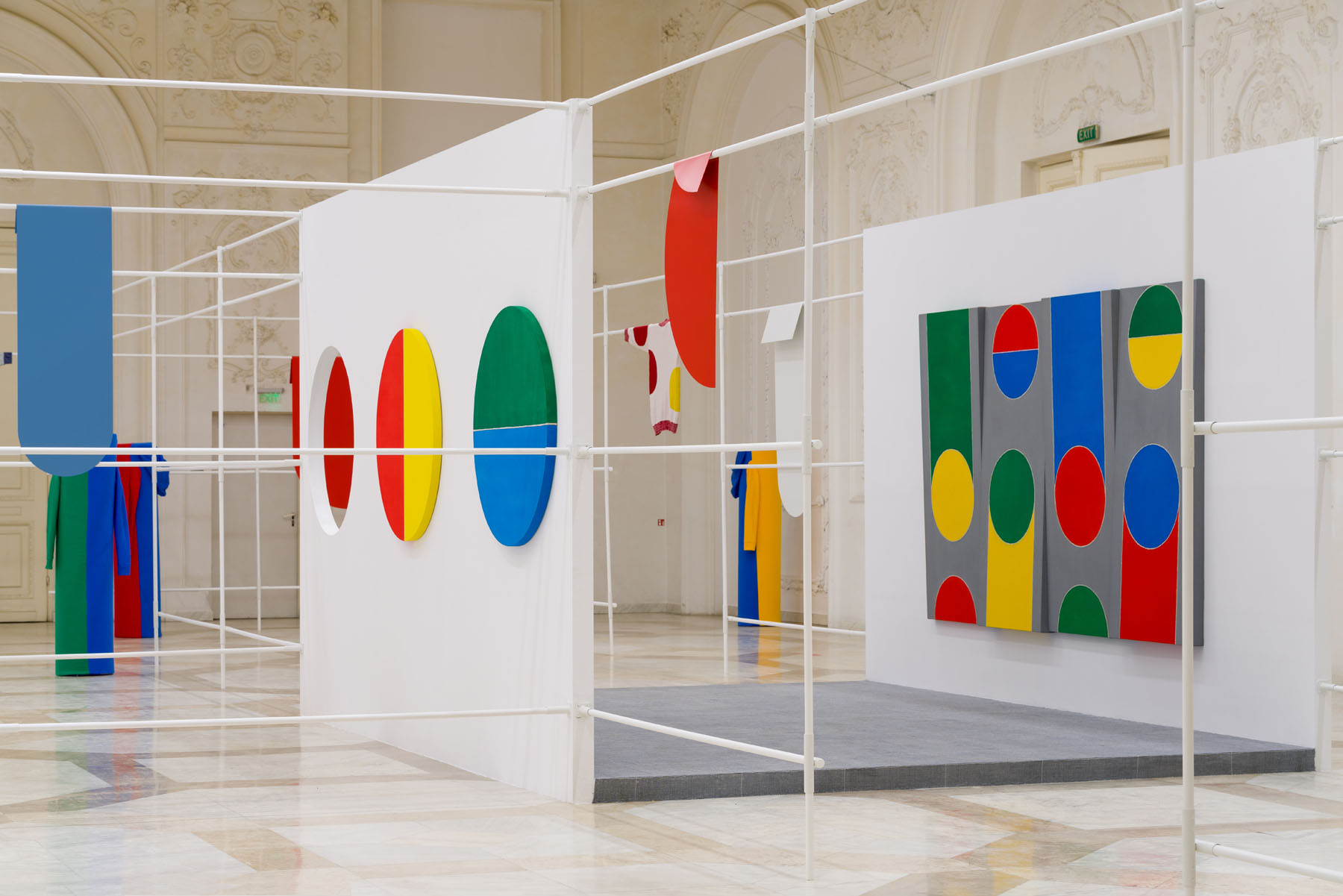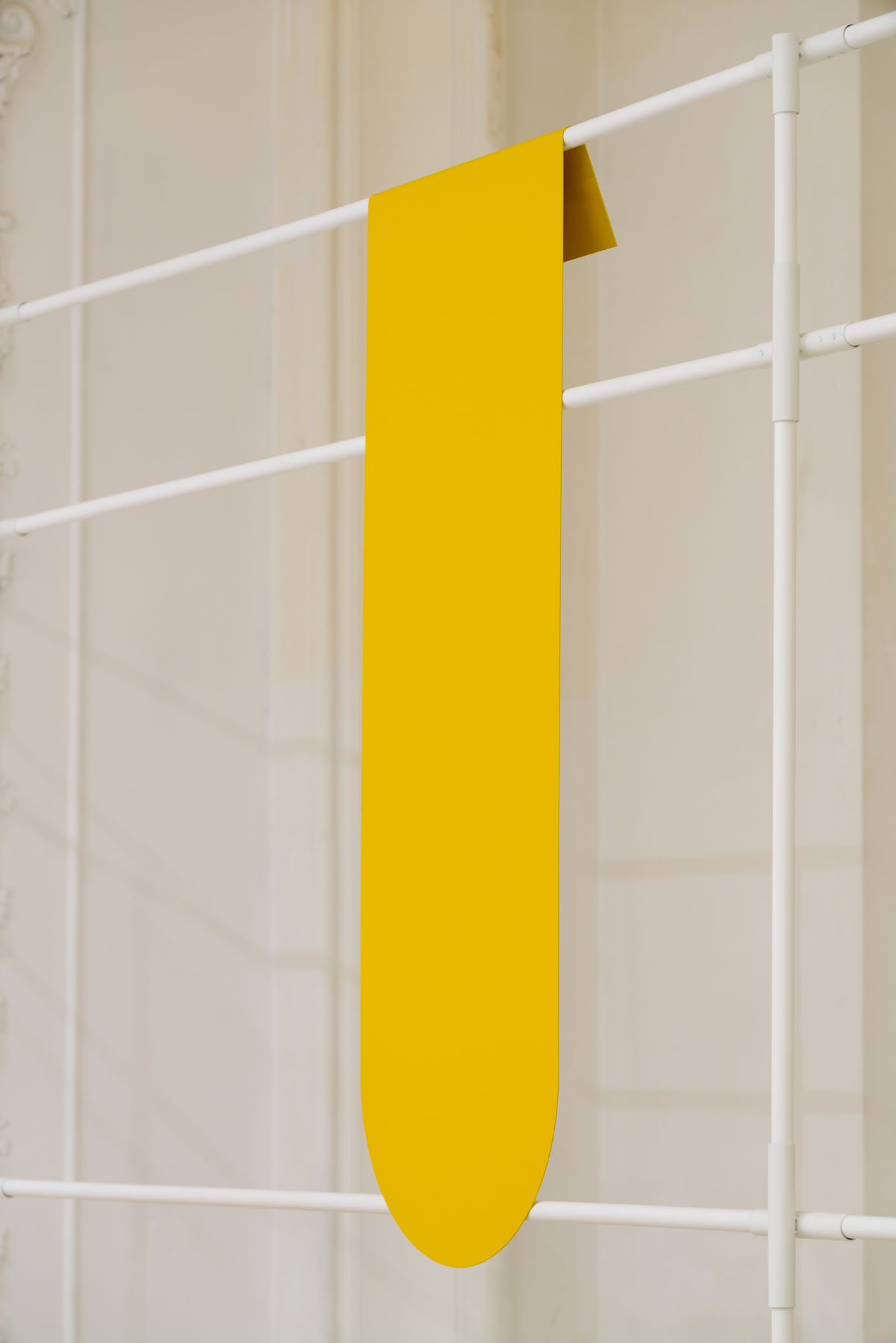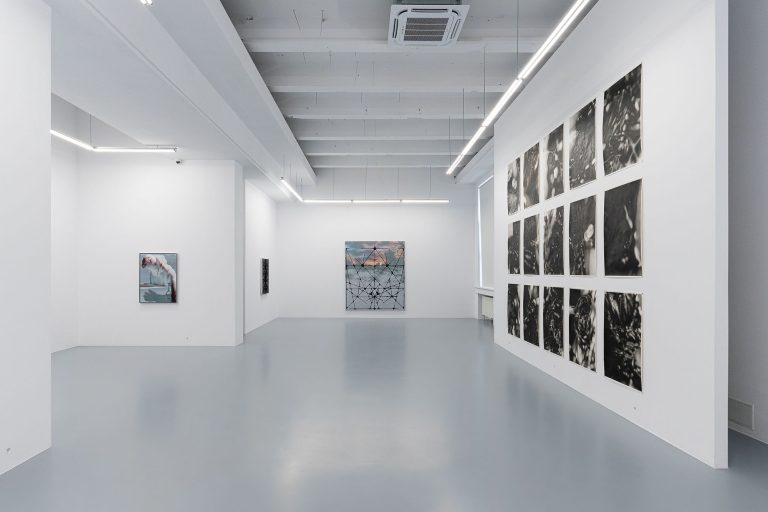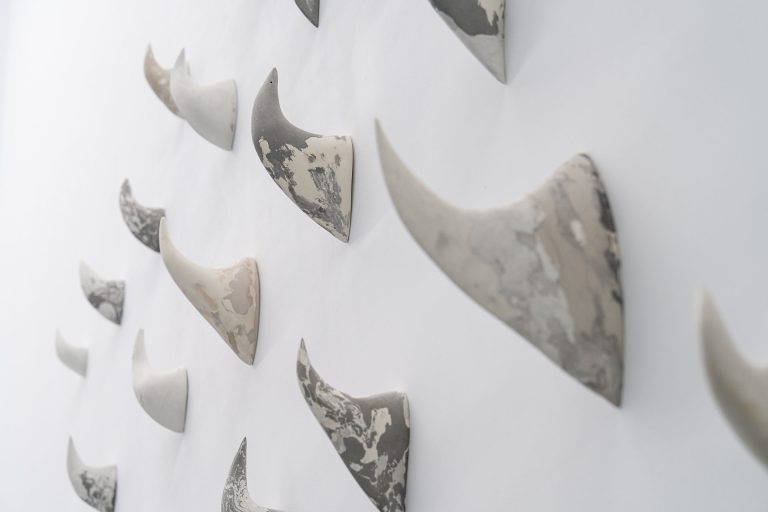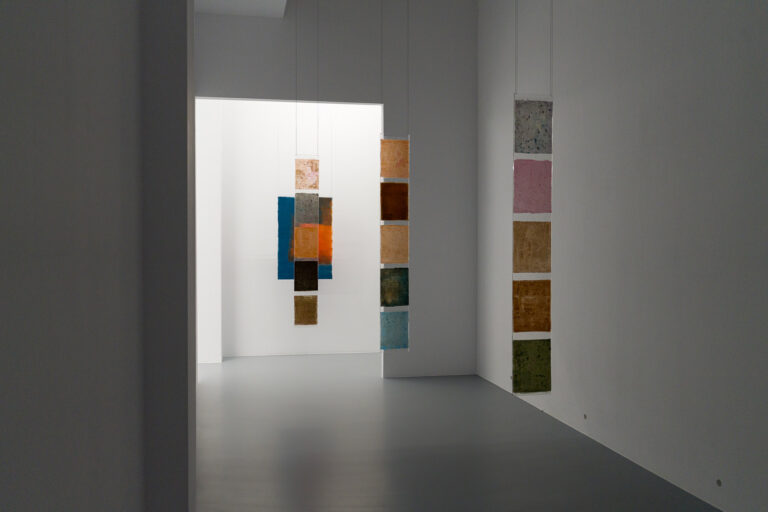Artist: Radu Comșa
Exhibition title: Reductionist Debate in 4 Colours
Curated by: Călin Dan
Venue: National Museum of Contemporary Art (MNAC), Bucharest, Romania
Date: June 10 – October 25, 2020
Photography: YAP Studio / all images copyright and courtesy of the artist and National Museum of Contemporary Art (MNAC), Bucharest
A4. THE SPACE AS A PIECE OF PAPER
Radu Comșa and I first met professionally around a botched project he was supposed to make in the signatory Marble Hall of MNAC, together with Sorin Neamțu. The ideas were flowing in the wrong direction and I suddenly got the revelation of divorcing the two artists because their intellectual profiles are too complex and that was bringing trouble. It becomes now obvious for the second time that I was lucky – because both artists proved me right: after a brilliant demonstration from Sorin, the Marble Hall at MNAC hosts now an overwhelming demonstration signed by Radu.
The demonstration where Radu Comșa involves us physically, intellectually and emotionally has several levels. The first and more trivial one is about the talent of the author. From the moment I lied eyes on Comșa emptying a van full of strange concrete sculptures with colorful scraps of metal dangerously popping out from the rough surface (it was a chance encounter, before I even met the guy, in the courtyard of the famous by now Paintbrush Factory of Cluj), a certitude that this was a different kind of artist then what is circulated right now in Romania came upon me. This difference made Comșa an elusive target for the superficial radars of those who make the fashion on the “art scene”, and although his work is there, in your face, powerful, and abundant, it is somehow delicate and thus remained confined to an area of discretion. Not anymore I would say, with the opening of the Reductionist Discussion in 4 Colors show at MNAC.
Here comes the second level of demonstration, focusing on the intellectual importance of being a visual artist. My encounters with Radu Comșa take always place in the presence of his notebooks, objects that I watch with fascination and also with frustration: the black covers are bulging under the internal pressure of multi-layered collages, the pages flipped nervously by the artist, in the always accelerating pace of his monologue are literally covered with texts, schemes, and lots of colors – everything is promising endless delights, but Radu is actually very parsimonious in letting people see things. The discretion is both part of his character and his strategy; Radu Comșa meditates, reads, looks for analogies, for translations. His visions of new art objects are not taking off unless they are vouched for by a cultural universe carefully mapped and thoroughly explored. There is an enormous subterranean effort in Comșa’s notebooks, and this secret dimension of an artist’s work is always a guarantee of the intellectual quality of the oeuvre.
A third level of demonstration concerns the strength and the vulnerabilities of language. Because Radu Comșa is not only an avid translator of cultural metaphors into art production, but he is also a linguistic pathologist of sorts, looking at communication’s complexities and weaknesses alike. In his own words, the Marble Hall at MNAC is like an A4 paper sheet on which he is making colorful notes with wood structures, metal sculptures, circular woolen rugs, mannequins dressed up in color codes, custom made pullovers, and a bicyclist. In the end, Radu might have responded unknowingly to my frustration, letting a piece of paper fall from his notebook, and transforming it through the miracle of art production into an enchanted 3D environment. The objects animating the space are – again in his own words – the elements of a blown-up painting. But, more importantly, they are phonemes, syllables, words, ideograms, composing and disintegrating a discourse that we are supposed to read with our bodies and to feel with our eyes. In that respect, the Reductionist Discussion is a meta-discourse, putting at work the imprecision and liabilities of communication, in order to exacerbate the sensorial level of our experiences – language is a touching act.
The final demonstration is about the inexhaustible fun of culture. Radu Comșa has the manifest pleasure of research. Which goes in unexpected directions, from the game of Twister, to the mysteries generating by playing the Rubik cube, to the history of perception and of the theories of colors, to (finally here, at MNAC) a less known comedy by Alfred Hitchcock. This supremely playful eclecticism has its raison d’être in the fact that the artist does not look for answers / solutions to his dilemmas, but is in search of kindred spirits, of analogies confirming his inquiries, his reveries, and his states of mind. An obvious pleasure (Comșa’s own word) comes from this process, the artist has no notion of identity crisis, no obsession of originality, he is operating beyond the realm of modernity, in a zone where the exercise of art production is a spiritual path towards the encounter with kindred minds.
The “reductionism” notion from the exhibition’s title is just a trap for those who are missing the humor of the whole construction. Reductionism is a most (ab)used concept in the history of philosophy, but it has a catch, because it reminds the dark hours when marxist-leninist-stalinist ideology was holding the stage in Eastern Europe, and when any model of the world that was not complying was – pure and simple – reductionist. What we have here is thus not only an insiders’ joke, but also a code name for revolt against any form of conformism, including the ones propagated in the last decades by Painting. There is a polemical twist in Radu Comșa’s approach to the visual language, and it targets this most revered medium promoted internationally by the so-called Cluj School of Painting. A more careful look at his studio – a mix of storehouse, factory, office and experimental lab – unveils a complicated relation with the medium of painting. In Radu’s world, everything is about colors, but they are firm, flat, energetic, and most important – integrated into the materials used. Comșa understands painting as another dimension of the world, not as a world in itself. The painterly is a non-existing quality, irrelevant. What remains relevant after getting rid of it is logical, beautiful, and alluding to function. In a context aspiring (at its best) to Gerhard Richter, Radu Comșa dreams of Bauhaus, Le Corbusier and Jean Prouvé.
His work is a continuous expansion of painting into the real world, a refusal of utopia, a game of conquering – like Twister. The poster image for Reductionist Discussion in 4 Colors presents the feet of the artist, draped in the celebrated 4 colors; he impersonates the title character from The Trouble With Harry, Hitchcock’s comédie noire, where poor Harry’s corpse is relentlessly buried / dug out / buried again, as his demise is wrongly assumed by different characters. Nobody loves Harry, nobody liked him, nobody is sorry for his death. But he keeps coming back – a substitute and a metaphor (as Radu Comșa says) for Painting itself. In one of Parajanov’s films, the corpse of a local ruler that keeps being buried and mysteriously coming back in various places haunts a village. From slapstick to tragedy, the dictatorship of Painting seems to occupy our minds even now. Radu Comșa introduces a Dadaist element in the show, inviting an acrobatic biker to draw invisible paths in his colorful installation. Thus he reminds us that the death and the resurrection of painting are absurdist refrains, and that reductionism might refer as well to the reductio ad absurdum.
-Călin Dan






